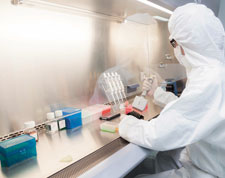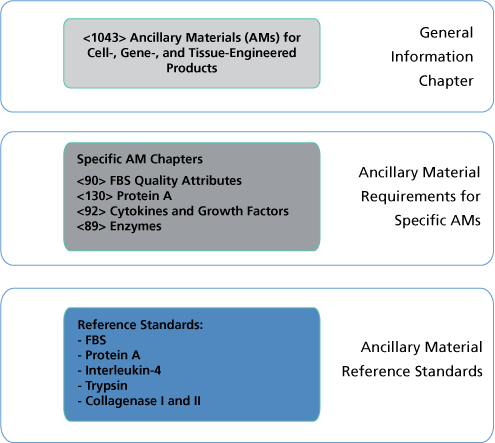
Managing and prioritizing risk is essential to ensuring raw material quality. USP is developing new guidelines to make the work easier. By Fouad Atouf, PhD
This article describes some of the challenges involved in qualifying raw materials for use in biologics production, and how quality standards may evolve to support biologics manufacturing. The International Council for Harmonization’s (ICH) Q7 guidelines define raw materials as “starting materials, reagents, and solvents intended for use in the production of intermediates or APIs” (1). With biopharmaceuticals, however, this definition can be expanded to include other materials that are added to the manufacturing process, or that may come in contact with the active ingredient, including process materials such as buffer and media, selection devices, ancillary materials, packaging materials, and excipients. Each of these types of materials must be qualified before manufacturing can safely begin.
Quality by design (QbD) principles call for the use of systematic approaches to development, starting with predefined objectives and an emphasis on product and process understanding and process control. This approach underscores the importance of raw materials and all the components of the manufacturing processes.
In addition to regulations and guidances, standards developed by the United States Pharmacopeia (USP) and other pharmacopeias can help biopharmaceutical manufacturers meet requirements.
The use of raw materials that have been manufactured in a GMP-compliant environment provides assurance that the processes used to make the materials are reproducible and that the quality of final products is controlled. In such cases, changes to the process cannot be implemented without assessing their impact on the finished product.
When raw materials are procured from commercial, non-GMP compliant sources, however, the risks of manufacturing failure increase. In this type of situation, raw material specifications may change without an assessment of their impact on finished product quality. In addition, specifications for non-GMP-compliant raw materials are often wider than would be acceptable in a GMP-compliant environment.
Risk-based assessment
Risk-based assessment can be used to determine the criticality of the raw material. The level of risk will determine the level of testing required, beyond the information found in the CoA.
Generally, a raw material that is used in large quantities in the downstream process will pose a higher level of risk than one that is used in small amounts in an upstream process. Similarly, a material that is used in steps of the process with long holding times will pose a greater risk than one used where there are shorter holding times.
The use of animal- or human- derived materials presents the additional risk of introducing adventitious agents or communicable diseases into the process. When these materials are used in a process, screening for potential contaminants is a crucial element of the control strategy. The risk-based approach will depend on the potential for raw materials to remain present, at trace levels, in finished product. It is also important to study the impact of the raw material on the development and manufacture of biological drug substances, as per ICH Q11 (2).
Ancillary Materials
USP <1043> Ancillary Materials for Cell, Gene and Tissue-Engineered Products, provides guidance for assessing the risk, and qualifying the use of materials used to manufacture cell, gene, and tissue-engineered products.
However, the principles described in <1043> may be extended to raw materials used in biomanufacturing in general. In <1043>, raw materials are grouped in four different tiers, depending on the level of risk they present, and guidance is offered on how to reduce risk so that these materials can safely be used in biological manufacturing.
The risk-based categorization takes into account the initial intended use of these materials (e.g., pharmaceutical grade material is considered low risk, while research-grade material would be high risk). Also considered are:
- The amount of material
- The stage at which it is used
- Its potential to remain in the finished product.
Table I shows the criteria that define the level of risk for these four tiers of raw materials used in the manufacturing of cell therapy products and biological manufacturing in general.
Levels of risk and Definitions and criteria that define the level of risk
Tier 1: Low risk – Intended for use as licensed drugs, biologics, or medical devices. Suitability for use as a manufacturing component is required because the formulation, stability profile, and other quality aspects of these materials may change once the material has been introduced in the manufacturing process.
Tier 2: Low risk – Intended to be used as ancillary materials. These materials are well-characterized and produced under quality systems well-suited for biological manufacturing, but the materials are not licensed medical products. Many are produced specifically for use in the manufacture of biological products.
Tier 3: Moderate risk – Research-grade materials not intended for use in biological manufacturing. Sometimes, these products are approved by regulatory agencies as part of an in vitro diagnostic device. Tier 3 requires more qualification than Tier 1 or Tier 2 materials.
Tier 4: High risk – Materials produced as industrial or research-grade materials and may contain harmful impurities. They may also contain animal- or human-derived components with potential contaminants. This tier requires extensive qualification before use as component in biological product manufacturing.
Building on USP <1043>, USP began to work with expert committees on documentary standards, including test procedures and acceptance criteria, for some of the critical materials that are used in the manufacturing of biological products, such as cell therapies. These efforts also resulted in reference standards that support the test. An example of this work, and the hierarchy of approach, is presented in Figure 1.

Figure 1. Standards for raw and ancillary materials: from general to specific. All figures are courtesy of the author
These reference standards may be used as calibrators as well as critical materials to develop residual testing for these materials and control the level of their removal from finished therapeutic products. Standards for the raw and ancillary materials used in pharmaceutical and biopharmaceutical manufacturing have always been included in USP–National Formulary (USP–NF), in the form of monographs and supported by reference standards. Examples of these standards include some for inorganic salts, vitamins, amino acids, carbohydrates, and other buffers and components of raw materials.
The test procedures and associated reference standards for these materials may address their quality as excipients and when they are used as raw materials in a manufacturing process. If they are used as other components in manufacturing, however, additional work may be required to demonstrate that these tests adequately address potential questions about the material’s quality, in its new use.
Raw materials: Compendial use and beyond
Risk-assessment strategies are key to successful manufacturing processes; they help set proper specifications for raw materials and ensure that adequate testing approaches are in place. Developing test methods to verify the identity and quality of materials used in biopharmaceutical manufacturing can help prevent the use of unsuitable raw materials, providing a solid foundation for a successful process.
Pharmacopeial standards provide valuable tools for users of these materials. Standards can save them the time and expense that would be required if they were to develop and validate test methods themselves.
The reference standards, when they are available, serve as calibrators or comparators to ensure users that the material can pass the required tests. Suppliers may declare their raw materials to be compliant with USP standards when they meet compendial analytical specifications.
Raw materials that have been processed under GMP conditions and meet compendial monographs have established some base level of quality. However, their suitability for use in the process must still be proven. For example, pharmaceutical-grade human serum albumin is available for use as a cell culture supplement, and its quality can be tested against existing monographs. However, in order to establish its quality, the impact of the albumin’s lot-to-lot variability on cell growth, its stability in the process, and possible interactions with other processing components must also be assessed.
Numerous regulatory guidelines spell out the need for raw materials to be included in manufacturing strategies. However, these guidelines don’t describe specifically how to do this.
Pharmacopeial standards can be used to fill this gap as they can provide tools for compliance. Reference standards can be used as calibrators to ensure that the materials are used consistently, meet the same specifications and, subsequently, will be translated into consistent manufacturing.
Additionally, the standards can be used to measure residual amounts of materials, especially with the increased risk of raw material components remaining in the finished dosage form. In USP-NF, the procedures that support the use of such standards are prescribed either in general chapters or in monographs.
The use of raw materials in multiple sites adds complexity to risk and quality assessment. Common quality attributes must be used for materials that are used by the same organization to manufacture the same products in multiple sites.
Some of the issues that manufacturers need to address relate to the transfer of processes from site to site. It is important to determine the best type of comparability testing to use, since testing will be required to ensure that the quality of the raw materials does not have an impact on the quality of finished products. The use of pharmacopeial standards can help mitigate the risks associated with manufacturing products in multiple sites.
Future directions
USP’s approach to setting standards for biologics is evolving, as it focuses on developing standards for some of the critical raw materials used in biomanufacturing, in addition to developing system suitability and performance standards that can be used to demonstrate method and process performance.
As it evaluates the type of raw materials to be included in this strategy, USP is considering different types of standards that can help industry establish consistency in bioprocesses. For example, it is developing reference standards, without documentary standards, when a well characterized material can be used as a standard against which raw materials suppliers or end users can calibrate their batches. Situations may arise in which the reference standard has a value only when procedures and acceptance criteria are available; in this case, USP will develop a documentary standard into a monograph or a chapter.
USP’s Biologics program is committed to using the information and data gathered during the evaluation of these materials to share best practices and lessons learned, either in white papers, journal publications, or USP informational chapters. Collectively, these standards will provide measurement tools to address the chemical identity of raw materials, characterization of some impurities, and the assessment of trace levels of chemical or elemental impurities that should not be present.
Critical materials that will be assessed as part of this new standard-setting initiative will include:
- Cell culture media
- Enzymes used in bioprocesses
- Complex extracts used as cell-culture supplements (e.g. protein hydrolysates)
- Polymers used in therapeutic protein-polymer conjugates.
Additional market research and analysis will be conducted to develop a comprehensive list of raw materials to include in this strategy. USP welcomes feedback and recommendations on the types of standards that are most needed for these materials.





